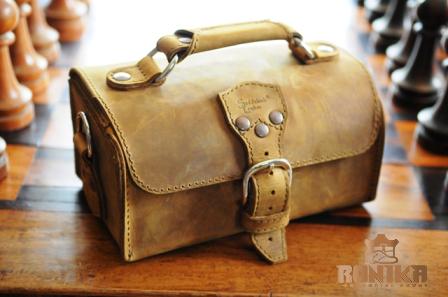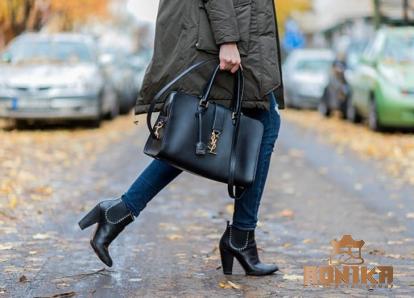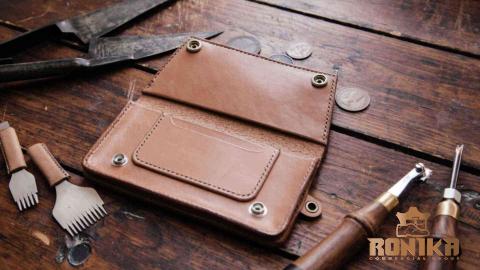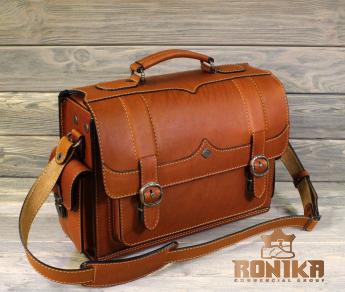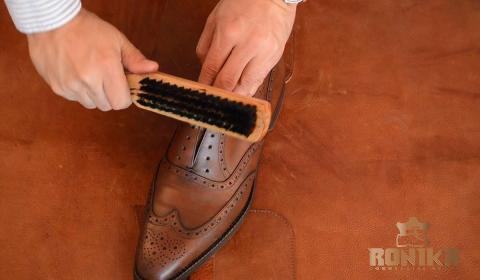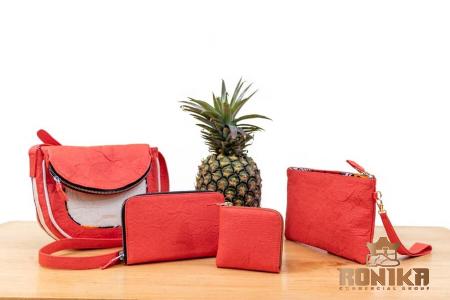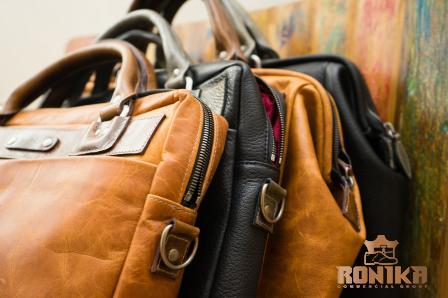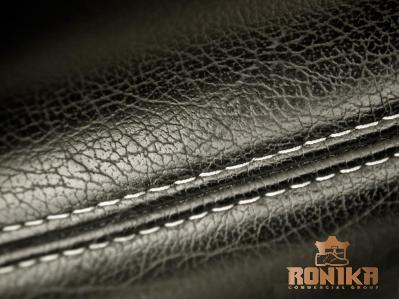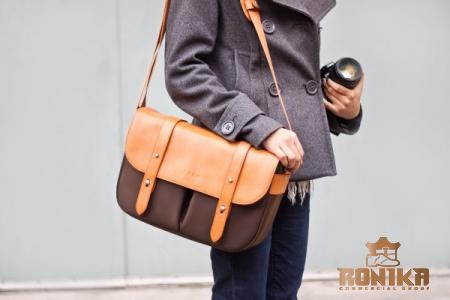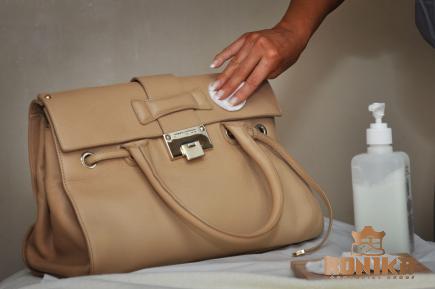Between suede and nubuck leather, there aren’t many noticeable differences. Nubuck leather has been sanded on the animal’s outside skin, whereas suede leather has been sanded on the interior layer of the skin. Nubuck typically lasts longer since it has a harder outer layer than other skin types.
To prevent stains and scuffs, however, these materials require greater upkeep than shoes made of any other material. We have a variety of treatments available to keep most dirt off of your suede and nubuck shoes. You’ll need the following depending on what created the stain:
1-Magic gum for dry cleaning the shoe’s exterior and getting rid of tough stains.
2-Combi foam to remove salt and water stains.
3-Spray on suede and nubuck protectors to protect against rain and bring out the color.
How to clean your suede or nubuck shoes? Check the following procedure below:
1-To restore the nap of the suede, carefully brush any debris or worn-out shining spots off of the shoe’s surface with a brush or self-cleaning sponge.
2-To remove tough stains, gently rub magic gum over the stained regions and then scrub the area with a brush.
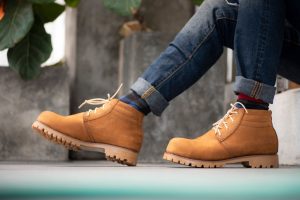
4-Shake the combi foam before applying it to the shoe with the nubuck and suede brush.
5-To clean, dab a gentle cloth with water.
6-To eliminate the majority of the liquid, gently dry the shoe by dipping a dry cloth into the water.
7-Allow the shoe to dry for a few hours while stuffing a rag, a kitchen towel, or a newspaper into the shoe to absorb water (but watch out that the newspaper ink doesn’t leak out!).
8-Take the shoe to a well-ventilated place, spray it evenly and sparingly from a distance of 30 cm with the nubuck and suede protector spray, and then leave it to dry.
9- Use a gentle brush to polish the shoes.
how to clean nubuck leather shoes
Nubuck is a type of suede that is made of leather and has a surface that feels quite similar to suede. However, nubuck is more durable and more expensive than suede. This supple leather is utilized in a variety of items, ranging from footwear to upholstery.
It is feasible to clean nubuck in a way that is gentle and effective, and that also restores the nap, without using pricey cleaners purchased from a store. It is feasible to clean nubuck in a way that is gentle and effective, and that also restores the nap, without using pricey cleaners purchased from a store.
1- The first step is to use a soft cloth to rub the surface of the nubuck in a mild, back-and-forth motion while moving in a variety of directions. This will remove any loose dirt or dust as well as restore the nap of the piece.
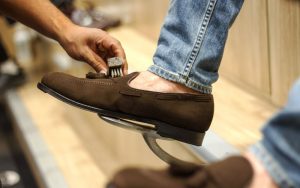
Step 2: Check the nubuck for any old stains that may have dried. If you find one, use a toothbrush that you don’t need to rub the dried spots in a circular motion. The stain will be removed carefully and without causing any damage to the fabric if you use this method.
Step 3: After soaking a cotton swab in white vinegar, massage the cotton swab into any stubborn wet or dry stains.
4-The fourth step is to remove the white vinegar with a clean, soft cloth. Before utilizing the item, make sure it has had sufficient time to dry thoroughly in the air.
5-The fifth step is to spray the item with a nubuck protectant spray and let it dry. It is recommended that the spray be used once every six months to maintain its protective effect against future stains on the nubuck surface of the couch, shoes, or any other nubuck product.
what animal is nubuck leather from
nubuck, like the other types of leather, is made up of animal skins. But what animal?!
Nubuck is simply another type of leather, like suede. It is animal skin that has been sanded down after being torn from the body (much like leather). Cow skin is used to make nubuck leather. Like suede, nubuck is luxurious leather that is both soft and long-lasting.
Although it has a glamorous and aristocratic past, today days it is most frequently connected to high-end footwear. Nubuck has a velvety feel, is soft, and is quite strong. In contrast to suede, nubuck is created from the exterior of the animal’s skin. This implies that while it has many of the same characteristics as suede, it is naturally thicker and so more tough and durable.
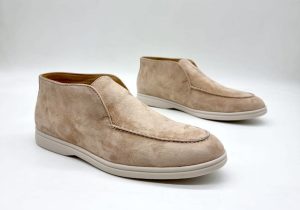
Nubuck was formerly manufactured from deer or elk, but nowadays it is most frequently made from calfskin, which gives it its incredibly smooth texture. Compared to suede, nubuck typically has more natural flaws because it comes from the skin’s outer layer. However, many producers stain the product to cover up any obvious flaws, producing a lovely and smooth product.
As a result, the majority of nubuck shoes look perfect and are ready to wear right out of the box. The leather known as nubuck is incredibly smooth. This is caused both by the calfskin it is made of and by the production method. Short protein fibers are produced when the hide is sanded or polished, giving the leather resilience while also increasing its softness. Shoes made of nubuck are quite comfy to wear.
is nubuck leather waterproof
Full-grain leather that has been polished down to create nubuck leather resembles an extremely soft but sturdy suede. Nubuck, like leather, is naturally waterproof. The rain never damages nubuck footwear. However, that does not imply that letting them get wet is OK.
Your shoe does experience some degree of water damage. But if you can use the right techniques and professional advice, your shoe will always be safe and undamaged. Nubuck is a type of leather, however, it is neither smooth nor protected.
which leaves it exposed to precipitation and possibly snow. Rain absorbs water into the material, which then creates severe damage. and your shoe gets several distinct kinds of damage as a result. Leather hides are used to create nubuck. The nubuck is extremely water-sensitive because of its soft skin.
As a result, nubucks’ dye quickly fades when they are wet. The good news is that you can prevent this from happening in the first place by applying a long-lasting waterproofing spray.
Is It Acceptable To Wear Nubuck Shoes In The Rain?
You can, of course. You may wear nubuck shoes on a rainy day simply by following a few steps. The most significant of all the steps you must take is patience. Nubuck shoes are indeed susceptible to harm from moisture. But when it’s protected, that’s not the case.
Protection? How can I go about doing that?
Easy. Simple instructions must be followed both before and after your shoe is wet with rain. then you can wear them without frequently checking the weather report.
nubuck leather care
all types of leathers need care, and nubuck is not an exception.
Nubuck is quite comparable to suede leather in appearance. Even though it does not have a protective treatment, it is still pretty simple to clean and it is quite long-lasting. Even though this type of leather absorbs water, most accidents can be cleaned up without much trouble.
On the other hand, oil-based substances might be difficult to clean up if they are not addressed right away. Even though this type of leather absorbs water, most dirt can be cleaned up without much trouble. On the other hand, oil-based substances might be difficult to clean up if they are not addressed right away.
Caring nubuck leather doesn’t need much effort. Oil-based products should be avoided getting on this kind of leather since they can penetrate deeply into the surface and, if left for too long, will dry and leave a stain. Additionally, heated oil can burn the fibers, causing a shadow to appear on the leather.
The majority of liquids, including coffee, squash, and oil, are cleanable; nevertheless, they must be cleaned promptly and, if at all possible, should not be allowed to dry. Nubuck does not need to be conditioned, but a waterproof protector can be applied to it to offer a protective coating that will allow it to repel liquid, making it more durable and easier to clean.
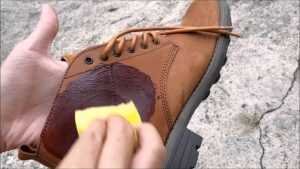
Nubuck does not need to be conditioned, but a waterproof protectant can be applied to it to offer a special covering that will allow it to repel liquid, making it more durable and easier to clean. In most cases, our cleaner can be able to remove stains even after they have been there for some time.
When it comes to maintaining this type of leather, a waterproof protectant is an excellent way to do it because it helps to protect the surface from dirt and any liquids that may be spilled on it.
nubuck shoes
Nubuck is a small leather with a suede-like texture that is more durable and resistant than suede. Dye adds beauty to the leather. It has a unique aesthetic and is utilized in shoes, jackets, women’s bags, travel bags, and furniture. Due to its past with modern fashion and nobility, it’s great for luxury and medium things.
It’s harder than suede. Nubuck is more durable than suede as it’s full-grain leather. It’s perfect for manufacturing boots and wearing them during cold and snowy seasons due to its rough surface compared to other skins. It absorbs stains and grime. Nubuck is easy to clean.
All you need is a cleaning brush. You can remove dirt with a damp cloth and use a brush to clean the surface after it dries. Avoid water and moisture; if nubuck gets wet, let it dry in a home corner. You can clean the nubuck every two or three weeks to keep it in good condition.
Although nubuck leather looks like suede and Ashbalt leather, it is created from the outer layer of the leather skin. Unlike Ashbalt and suede, nubuck leather has a velvety surface and is more brittle. Therefore, nubuck is preferable to Ashbalt and suede. As a fine and unusual leather, Nubuck is expensive.
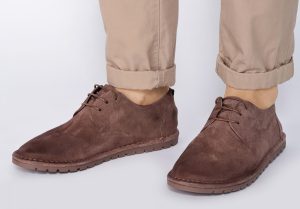
To tell the difference between suede and nubuck, there are some factors to distinguish:
Thinner materials are less durable and sturdy, therefore nubuck is thicker than suede. Thinner materials are less durable and sturdy, therefore nubuck is thicker than suede. Suede is harder to clean than Nubuck, for example. suede is softer than leather.
Suede and nubuck are often difficult to tell apart. Suede is used to make gloves, coats, and other items. Durable nubuck is used to make shoes. Nubuck leather is more water-resistant than other varieties of leather.
nubuck vs suede
Suede and nubuck leathers are both softer and more ‘fuzzy’ than regular smooth leathers. These types of leathers are typically utilized for the production of footwear and accessory goods due to their many desirable characteristics. Because the top layer of material on leather hides is removed during the manufacturing process of suede and nubuck, the resulting leathers have a fuzzy nap.
This is because suede and nubuck are both made by sanding the hides of leather. On the other hand, there is a significant distinction between the two types of material. Suede is produced by sanding or rubbing the inner surface of the leather skin to achieve the desired texture. The sanded surface of the outermost layer of the leather hide is used to produce the material known as nubuck.
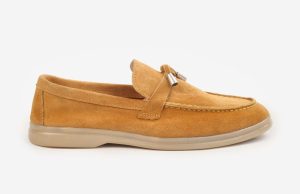
It is typical for the outermost layer of the leather hide to be significantly thicker, more sturdy, and more long-lasting than the other layers. Because of this, nubucks typically have a texture that is slightly less pleasant to the touch but is far more long-lasting.
Because of its increased durability and toughness, nubuck is an excellent material for use in footwear applications. Suede leathers are often crafted from the inside layer of the hide, which is known for its suppleness, thinness, and tendency to be employed in the production of suede.
As a result of this, suede is regarded as a very luxurious product that functions exceptionally well in applications that involve direct contact with the skin, such as gloves and more expensive footwear.
Nubuck doesn’t patina like leather or suede, so if you want a pair of leather with patina patterns, don’t get nubuck. If you like velvety texture but want hard-wearing and patina-developing boots, roughout leather is for you.

